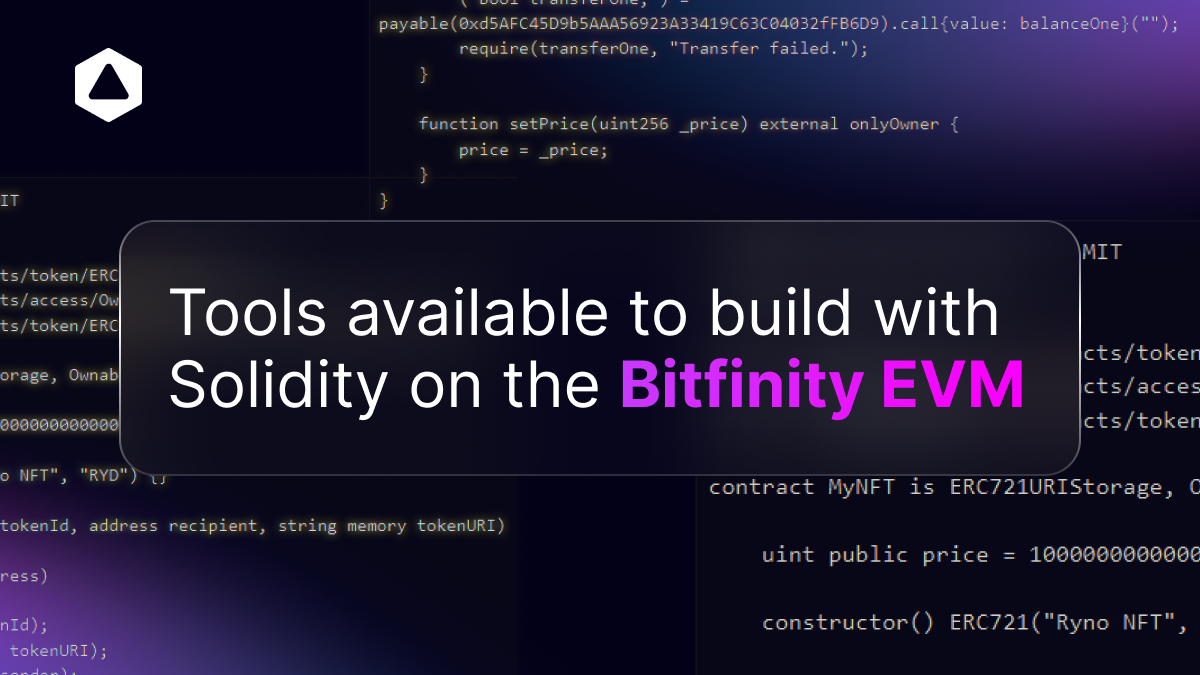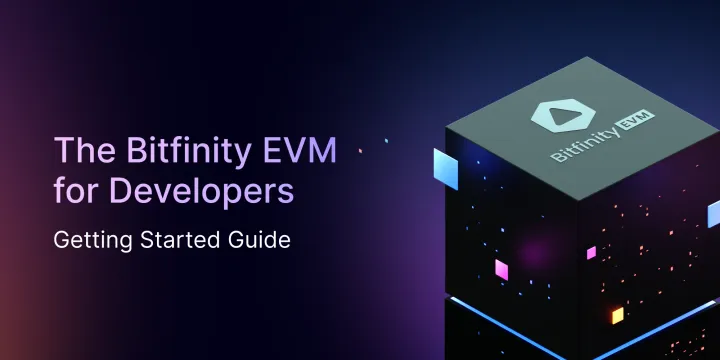Tools available to build with Solidity on the Bitfinity EVM

There are several tools available to build with Solidity on the Bitfinity EVM, each with its own advantages and disadvantages. Here is a comparison of some of the most popular tools:
Truffle (see docs for tutorial)
- Development framework for Solidity projects
- Includes a built-in Solidity compiler, Ganache test network, and testing framework
- Supports integration with other build tools like Webpack and Babel
- Large and active community with extensive documentation and tutorials
- Can be difficult to set up for beginners
Hardhat (see docs for tutorial)
- Developer-oriented Ethereum development environment
- Includes a built-in Solidity compiler, testing framework, and Ganache-like local network
- Offers a powerful scripting interface and plugin system for customization and automation
- Supports advanced features like console debugging and gas usage profiling
- Can be overwhelming for beginners due to its advanced features and configuration options
Remix (see X)
- Web-based IDE for Solidity development
- Built-in Solidity compiler, debugger, and testing framework
- Supports deployment to Ethereum and other EVM-compatible blockchains
- Free and open source
- Easy to use for beginners, but lacks some of the advanced features of other tools
Brownie
- Python-based development framework for Solidity projects
- Includes a built-in Solidity compiler, testing framework, and deployment management system
- Supports integration with popular Python libraries like NumPy and Pandas
- Offers a clean and well-documented API for interacting with smart contracts
- Pythonic syntax and design may not appeal to all developers
Embark
- Development framework for decentralized applications (dApps)
- Provides tools for Solidity development, IPFS-based data storage, and dApp deployment
- Offers a clean and easy-to-use interface for beginners
- Has a low barrier to entry for developers who are new to Ethereum and dApp development
- Limited support for non-IPFS data storage solutions
OpenZeppelin
- Library of pre-built, tested, and audited Solidity smart contracts
- Provides functionality for common tasks like token creation, access control, and payment splitting
- Can be used in conjunction with other Solidity development tools to speed up development and reduce risk
- Lacks some of the customization and automation features of other tools
- May not be suitable for complex projects that require extensive customization
Writing back-end code in Solidity offers several advantages:
- Security: Solidity is designed to write secure smart contracts by incorporating security features such as input validation, access control, and code isolation. Solidity contracts are run on a decentralized blockchain, which provides a high level of security against hacks and malicious attacks.
- Immutability: Once a smart contract is deployed to the blockchain, it cannot be changed or deleted. This means that the code is immutable, which adds an extra layer of security to the back-end of your application.
- Transparency: Smart contracts written in Solidity are transparent, which means that anyone can inspect the code and verify its behavior. This transparency can help build trust with users and stakeholders and can also help reduce the risk of fraudulent behavior.
- Decentralization: Smart contracts are executed on a decentralized network, which means that there is no central authority controlling the back-end. This provides a high level of decentralization and can help eliminate the need for intermediaries in many use cases.

Connect with Bitfinity Network
Bitfinity Wallet |Bitfinity Network | Twitter | Website | Telegram | Discord | Github






Comments ()